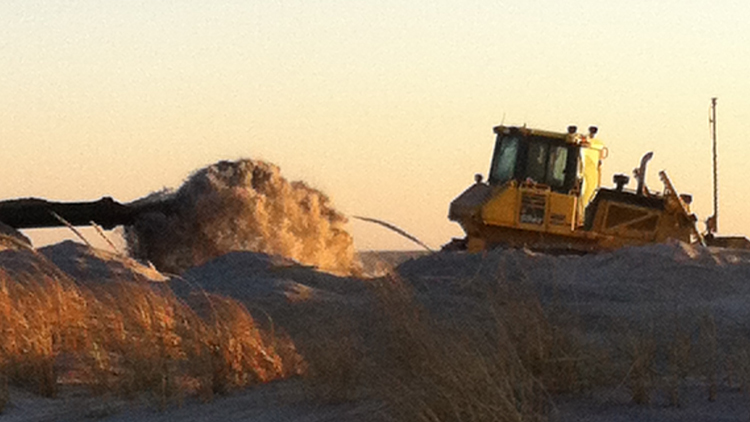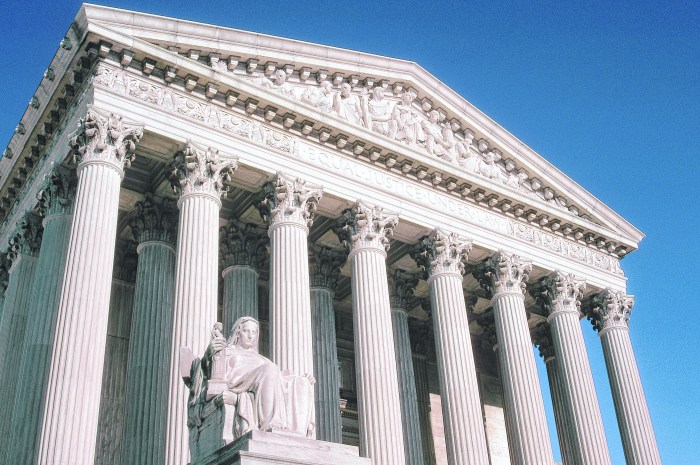“The Army Corps is fired up to help Fire Island,” were the words of U.S. Sen. Charles Schumer (D-NY) following the emergency declaration announcement made by the U.S. Army Corps of Engineers (USACE) on Friday.
The declaration comes one month and eight days after the nor’easter that ripped though Fire Island prior to Christmas and just over two weeks after a counterpart flooding event that came through earlier this month, devastating areas on Fire Island already weakened by the December storm as well as other coastal areas along Long Island’s South Shore – including Gilgo State Park and Cedar Overlook – both in the Town Babylon.
“Today, we have made good progress,” said Schumer, the senate majority leader, said in the joint statement released by Gov. Kathy Hochul and U.S. Sen. Kirsten Gillibrand (D-NY). “That is a good thing because the Island is a mess from recent storm damage. But even more succinct: this is an emergency. I am glad the Army Corps has heeded this call and can now work with a designation that allows emergency dollars to be sought and used to remediate the wide damage we have seen to beaches, shorelines and inlets.”
The USACE determination unlocks federal intervention under Public Law 84-99 to provide for emergency activities in support of state and local governments prior to, during, and after a storm event.
Hochul’s formal request for the repair of three additional coastal projects – including the areas west of Shinnecock Inlet, shores west of Fire Island Inlet, as well as Downtown Montauk still remain pending.
“Long Island’s iconic beaches are a treasured natural resource and I’m doing everything in my power to protect them for the next generation,” said Hochul after she toured Fire Island and South Shore Long Island beaches earlier this week.
Hochul also announced a Comprehensive Resiliency Plan earlier this month in her 2024 State of the State Address to focus on extreme weather events, that included $435 million in her Executive Budget proposal to help implement the following initiatives:
- Create a ‘Resilient & Ready’ Program to establish fund support for resiliency efforts for low- to moderate-income homeowners ahead of future storms. Qualifying households that regularly experience flood damage would receive assistance to make necessary repairs in a storm’s aftermath as well as cover proactive flood mitigation improvement costs.
- Creating a ‘Blue Buffers’ Voluntary Buyout Program to encourage buyouts in communities most vulnerable to flooding. The program will prioritize outreach and education first and then begin identifying voluntary projects based on the level of flood risk with $250 million included in the 2024-25 Executive Budget to be set aside for this purpose.
- Invest in statewide disaster response to improve training and preparedness, and address evolving threats as they come.
- Update the Coastal Erosion Hazard Area (CEHA) Maps.
The Clean Water, Clean Air and Green Jobs Environmental Bond Act would help support these initiatives. Passed by New York Voter Proposition in 2022, makes $4.2 billion available for environmental and community projects that can be accessed by state agencies and local governments to protect water quality and help communities adapt to climate change.
“I’m thrilled to learn that the [USACE] have decided to help us and it’s about time,” said Thomas Ruskin, President of the Seaview Homeowners Association located on Fire Island. “We’ve known for months that our communities were in dire need. Everyone came together in this bipartisan effort. I hold out optimistic hope. There are still many hoops that the [USACE] and Suffolk County have to go through in the months ahead, and all 17 communities on Fire Island have to cohesively plan together for our future”






























